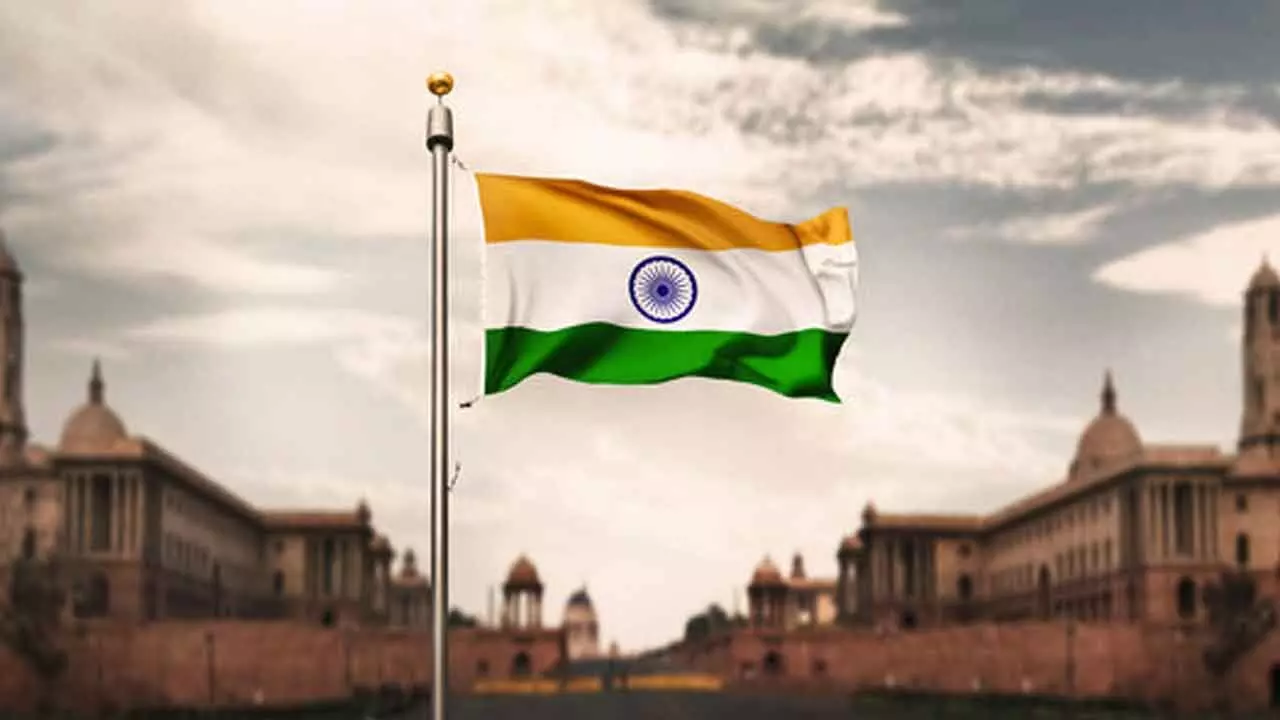Independence Day 2024: Unveiling the History, Evolution, and Fascinating Facts About the Indian National Flag

As India gears up to celebrate its 78th Independence Day on August 15, 2024, marking 77 years of freedom from British rule, the significance of the national flag, the Tiranga, stands out as a powerful symbol of the country's journey to independence. This year's theme, "Nation First, Always First," is part of the broader Azadi Ka Amrit Mahotsav celebration. Let's explore the rich history and evolution of the Indian flag, and discover some fascinating facts about it.
The Historical Journey of the Indian Flag
The origins of the Indian national flag can be traced back to 1906, during the Swadeshi movement. The first version of the flag was hoisted in Parsee Bagan Square in Calcutta (now Kolkata). This flag featured three horizontal stripes in red, yellow, and green.
In 1917, amid the Home Rule Movement, another flag was introduced by Annie Besant and Bal Gangadhar Tilak. This version had four alternating red and green stripes with seven stars arranged in the saptarishi configuration. A white crescent and star were placed in the top right corner, with a Union Jack in the top left.
A significant milestone occurred in 1921 during the Vijayawada session of the Indian National Congress when freedom fighter Pingali Venkayya presented a new design to Mahatma Gandhi. This flag consisted of three horizontal stripes—white, green, and red—representing the diverse communities of India. A spinning wheel was placed in the center, symbolizing self-reliance and the concept of swaraj.
In 1931, the flag underwent another transformation. The red stripe was replaced with saffron, and the design became more refined.
Finally, in July 1947, just before India gained independence, the Constituent Assembly adopted the flag of free India. This version, based on Pingali Venkayya's 1931 design, featured the dharma chakra (wheel of law) replacing the spinning wheel, and it was named the Tiranga.
Fascinating Facts About the Indian National Flag
1. Symbolism of Colors: The saffron in the national flag represents strength and courage, the white signifies peace and truth, and the green stands for growth and prosperity.
2. Dharma Chakra: The dharma chakra at the center of the white band is inspired by the "wheel of law" as seen on the Sarnath Lion Capital. It symbolizes the idea that "life is in movement and death is in stagnation."
3. Respect for the Flag: The national flag cannot be worn below the waist, even if it is part of any uniform or dress, reflecting the high respect accorded to it.
4. Designer of the Flag: The national flag was designed by Pingali Venkayya, a freedom fighter and geologist.
5. Largest Flag: One of the largest Indian flags is hoisted at the Attari-Wagah border crossing, measuring 110 meters in length and 24 meters in width.
The Tiranga is not just a flag but a symbol of the nation's unity, pride, and the relentless struggle for freedom. As we celebrate Independence Day, the flag continues to remind us of the values and sacrifices that have shaped the country.


















